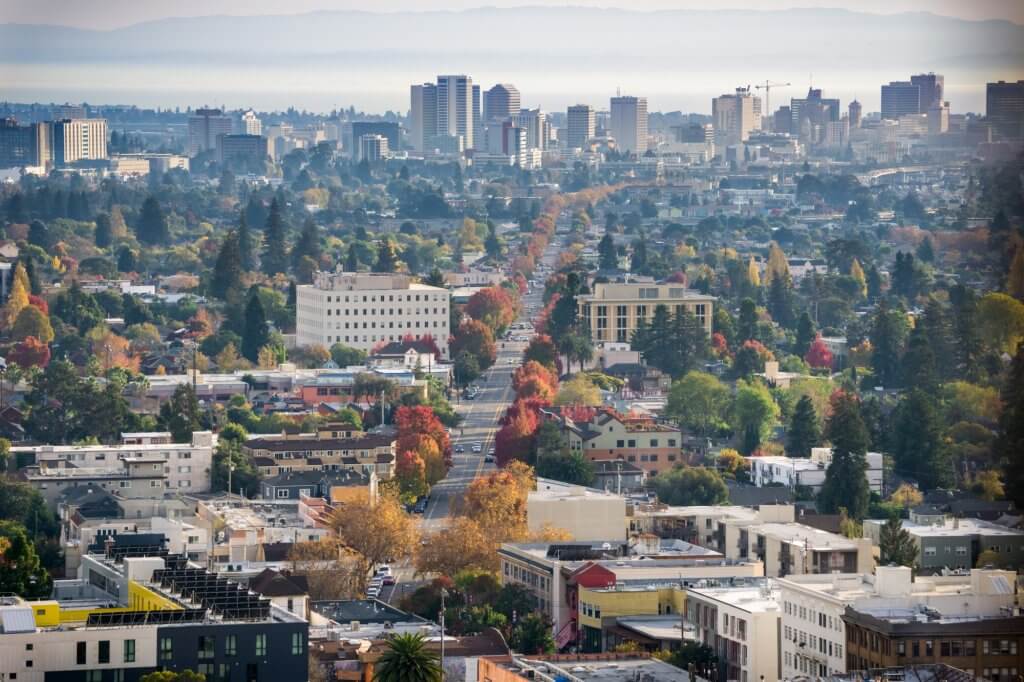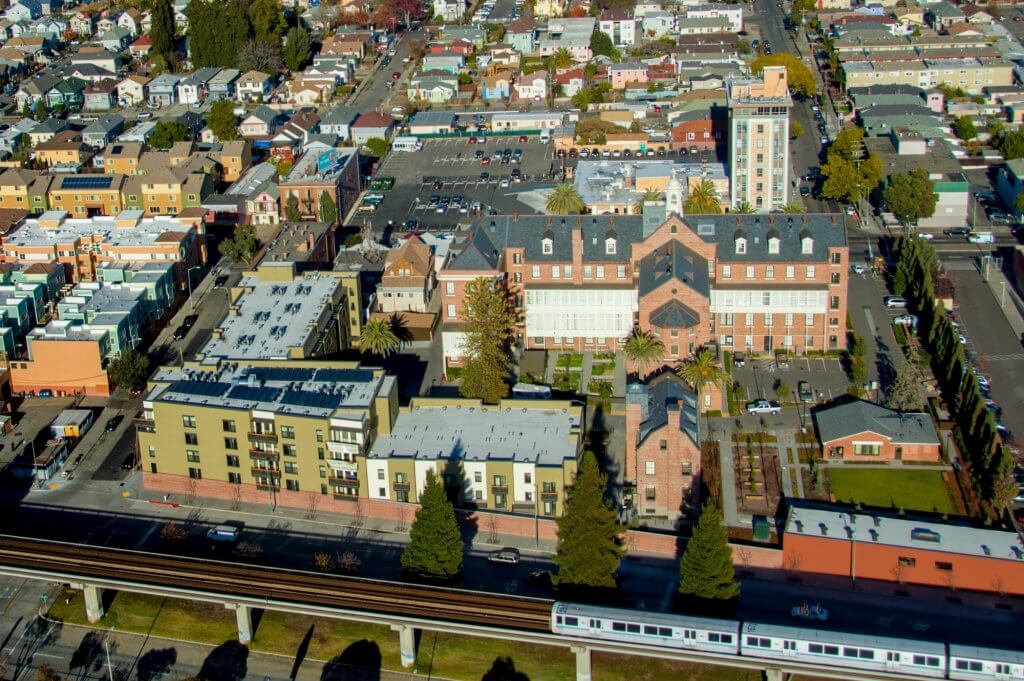Will Housing Finally Break Through in 2021? A California Legislative Preview
Published On February 22, 2021
Now that the deadline for introducing new bills for this year’s California legislative session has passed, we have a clearer picture of which housing issues will take center stage in Sacramento for 2021. In the shadow of a raging pandemic and prolonged housing crisis, the 2020 session ended mostly in disappointment as nearly every significant housing-related bill failed to reach the governor’s desk. While legislators did pass a critical last minute bill to stave off a wave of evictions, other efforts to expand where and what housing can be built largely fell short. This shortcoming was in part due to the idiosyncrasies of a COVID-19 shortened session, which severely limited the time needed to negotiate deals on several pieces of legislation. Yet the truncated session also highlighted the continued difficulty of passing major housing proposals without broad consensus from the diverse set of stakeholders engaged in the policy process. Policymakers widely acknowledge that housing will remain a core issue for the California legislature, as many of last session’s ideas have already been reintroduced in the first year of the 2021-22 legislative session, along with a slew of new proposals. This year’s slate of bills is largely set, with last Friday, February 19th marking the deadline to introduce new bills, and the bills will now move to policy committee hearings over the next few months. We’ve taken a look at what has been proposed so far and how this year might be different.
Legislators take early action on COVID-related housing emergency
With the effects of the COVID-19 pandemic continuing to hammer California renters, lawmakers spent the beginning of this year’s session passing much needed relief. Specifically, SB 91 enjoyed overwhelmingly bipartisan support and was signed into law at the end of January. The bill does two things: it extends the state’s existing COVID-related eviction moratorium (AB 3088) through June 2021, and establishes a statewide framework for distributing much-anticipated rental relief aid from the federal government. On the rent relief front, the bill authorizes the use of $2.6 billion to pay 80% of rent owed between April 2020 and March 2021 for lower-income renters (those making 80% or less of Area Median Income, though renters earning up to 50% of AMI will be prioritized). In return, landlords must agree to forgive the balance of arrears.
As we’ve previously examined, the economic fallout from the pandemic has created even greater cost burdens throughout the state. While federal efforts to stabilize the housing market through new rounds of emergency rental assistance relief will ultimately help, California’s share so far represents only a fraction of what is required to adequately address this challenge. Encouragingly, President Biden has called for an additional $25 billion in rental assistance in early 2021, though this new aid, if it passes, would likely be months from distribution.
Housing Production Package 2.0
With regards to supply-focused legislation, 2021 is going to look a lot like 2020. Most notably, Senate pro Tempore Toni Atkins and a handful of State Senate colleagues reintroduced a number of bills in December as part of a “Building Opportunities For All” housing package. This package includes some ambitious ideas that were unable to advance in 2020, including legislation that would allow for ministerial lot splits on single family parcels (SB 9), require cities to allow residential development on commercially zoned property (SB 6), create a streamlining tool for cities to rezone certain areas to allow up to ten units per parcel (SB 10), and expand an existing tool to expedite the CEQA process for larger projects (SB 7). Our work has highlighted the promise of some of these ideas, most notably on the potential for new homes on parcel subdivisions and opportunities for new residential development of commercial areas. These bills would take meaningful steps to address the state’s dire housing shortage, but major issues unrelated to the pandemic remain, such as continued disagreements on labor provisions and affordable housing requirements in many of these proposals. While there should be more time than last year to negotiate these outstanding issues, there is no clear consensus on a path forward so far. Moreover, the amendments that may be needed to gain passage may ultimately limit the applicability of some of these policies, making them less effective at catalyzing new home building.
One key element of this package that differentiates it from 2020 is SB 5, a spot bill for a statewide housing bond measure that would be sent to the voters, likely in 2022. Affordable housing advocates have been pushing for more funds to support creating more deed-restricted affordable homes, but were disappointed last year when any consideration for a new bond was shelved due to uncertainties created by the pandemic. A sense of urgency is growing as the State has signalled that bond funds from 2016’s Proposition 1 and 2 are likely to be substantially exhausted by summer of 2022.
In addition to the Senate housing package, several other compelling housing bills have also been introduced in 2021. Assemblymember Laura Friedman has introduced AB1401 which prohibits the enforcement of parking requirements on new housing projects near transit or in low vehicle miles traveled (VMT) areas. This bill has significant implications for the cost of building new homes, as our work has shown that each parking space can add an extra $35,000 per unit on affordable housing projects. Assemblymember Tim Grayson has introduced two bills – AB 602 and AB 678– specific to development fees, a topic that Terner Center has researched extensively, though specifics on each are not yet in print. And a November 2020 report by the California State Auditor’s Office on the state’s approach to building affordable housing has led some lawmakers to introduce new legislation to tackle some of the report’s many recommendations, including one bill that would eliminate the California Debt Limit Allocation Committee and move its responsibilities to another agency (AB 49 – Assemblymember Cottie Petrie-Norris). Other proposals include capping minimum lot sizes and floor area ratios for missing middle housing (SB 478 – Wiener), creating a new ADU financing tool (AB 561 – Ting), and generating new revenue for supportive housing and homeless services through an increase in corporate tax rates (AB 71 – Luz Rivas). A handful of tenant-focused bills have also been introduced, including a bill to extend statewide rent cap and just cause eviction protections to mobile home residents (AB 978 – Quirk Silva) and a bill that requires cities to establish rent registries by 2024 (AB 1188 – Wicks). In total, over 100 housing-related bills have been introduced (see partial list below).
Governor signals renewed support for housing efforts
In addition to new proposed legislation, Governor Newsom’s January budget also included new spending and policy priorities. The budget includes $500 million to support the creation of affordable housing through the state’s Low-Income Housing Tax Credit (LIHTC) program, as well as an additional $500 million for affordable housing infrastructure grants. $750 million is also proposed to extend the state’s Project Homekey program which provides funds for the acquisition and conversion of hotel and other properties for providing permanent supportive and affordable housing.
The Governor also proposed the creation of a new enforcement unit at the Department of Housing and Community Development (HCD), which would be responsible for monitoring local governments’ compliance with state housing laws. HCD’s current oversight of localities relies on tips from the public submitted via a web portal. This new organizational unit could enable HCD to take on a more proactive risk-based oversight role, monitoring localities to determine where they should focus their intervention. This expanded oversight role could rely on tools similar to the Housing Development Dashboard that the Terner Center beta-tested in 2016.
As always, Terner Center will continue to monitor legislative activity and provide data and analysis to inform the conversation. Below are links to the legislative text of the bills we are watching.
AB 49 (Petrie-Norris) – Eliminates the California Debt Limit Allocation Committee (CDLAC) and moves the agency’s responsibilities to the California Tax Credit Allocation Committee (TCAC)
AB 59 (Gabriel) – Increases noticing period for new or increased development impact fees and extends time that a new or increased fee may be challenged
AB 68 (Salas) – Spot bill to implement recommendations from the 2020 State Auditor’s report on affordable housing
AB 71 (Luz Rivas) – Funds supportive housing and homeless services estimated at $2.4 billion annually through an increase in corporate tax rates
AB 115 (Bloom) – Requires all jurisdictions to allow for residential development in commercially zoned areas provided that the development reserves 20% of the units for affordable housing
AB 215 (Chiu) – An intent bill to strengthen HCD’s housing law enforcement authority
AB 244 (Rubio) – Requires TCAC, CDLAC, and the California Housing Finance Agency to conduct an affordable housing cost study across all state funded housing projects.
AB 345 (Aguiar-Curry) – Clarifies rules around separate conveyance of ADUs built by non profit organizations for low income homeownership
AB 348 (Villapudua) – Requires HCD to conduct an annual summary report that discloses the amount of state, federal, and private funding spent on affordable housing development throughout the state
AB 387 (Lee) – Establishes the California Housing Authority to develop affordable and mixed-income housing
AB 561 (Ting) – Requires the Office of the Treasurer to work with CalHFA and HCD to create an Accessory Dwelling Unit financing product to assist homeowners in the creation of ADUs
AB 571 (Mayes) – Prohibits affordable housing or inclusionary zoning fees on the bonus units of a project using the state density bonus
AB 602 (Grayson) – Spot bill on residential development impact fees
AB 617 (Davies) – Allows jurisdictions the option of paying other jurisdictions to transfer all or a portion of their Regional Housing Needs Assessment allocation
AB 672 (Garcia) – Intent bill to enable to use of underutilized golf courses for affordable housing
AB 678 (Grayson) – Spot bill on residential development impact fees
AB 682 (Bloom) – Requires cities to allow cohousing projects in areas zoned for multifamily residential
AB 816 (Chiu) – Requires the creation of a statewide plan for addressing homelessness and allows for legal action against jurisdictions who do not make progress towards meeting the plan’s goals
AB 834 (Choi) – Creates a tax credit for property owners renting to tenants receiving housing assistance
AB 880 (Aguiar Curry) – Establishes the Affordable Disaster Housing Revolving Development and Acquisition Program within HCD to fund the the creation and preservation of affordable housing in disaster areas
AB 916 (Salas) – Prohibits public hearings for proposed room additions for single family homes, and expands allowable ADU height to 20 feet
AB 919 (Grayson) – Reduces the statute of limitations for construction defects from 10 to 5 years for projects that use a skilled and trained workforce
AB 946 (Lee) – Eliminates mortgage interest deduction on second homes and transfers resulting revenues to the Home Purchase Assistance Fund
AB 950 (Ward) – Authorizes the Department of Transportation to sell excess land to jurisdictions for the purpose of creating affordable housing
AB 978 (Quirk Silva) – Extends rent cap and just cause eviction protections established in the Tenant Protection Act of 2019 to mobile home residents
AB 1029 (Mullin) – Adds housing preservation policies to HCD’s list of local prohousing policies
AB 1068 (Santiago) – Requires HCD to create a model plan for the use of alternative forms of housing, including modular housing, for the purpose of cost reduction
AB 1090 (Quirk-Silva) – Establishes the Legislative Task Force on the California Master Plan on Homeownership which will submit a report to the legislature in October 2022
AB 1143 (Berman)/SB 649 (Cortese) – Allows jurisdictions to create local preference policies for affordable housing developments to local residents at risk of displacement
AB 1188 (Wicks) – Requires cities to create and maintain a rental registry by 2021 covering all landlords who own or operate five or more units
AB 1199 (Gipson) – Creates the Homes for Families Fund to provide rental assistance and affordable housing funding by establishing a new tax on landlords
AB 1277 (Rubio) – Creates an expedited judicial review process for CEQA for student housing projects
AB 1372 (Muratsuchi) – Requires every jurisdiction to provide access to temporary shelter to every homeless individual
AB 1377 (McCarty) – Creates the California Student Housing Revolving Loan Fund to provide loans for the purpose of constructing affordable student housing
AB 1401 (Friedman) – Prohibits parking minimums for residential or commercial projects near transit or within low vehicle miles traveled areas
ACA 1 (Aguiar-Curry) – Places on the ballot a measure lowering the voter threshold for affordable housing bonds to 55%, rather than 66%
SB 5 (Atkins) – Intent bill to place an affordable housing bond on the ballot, most likely in 2022
SB 6 (Caballero) – Requires all jurisdictions to allow for residential development in commercially zoned areas
SB 7 (Atkins) – Extends and expands CEQA streamlining provisions of AB 900
SB 9 (Atkins) – Allows for the ministerial approval of a subdivided single family parcel for the purpose of creating up to two new homes on each new parcel
SB 10 (Wiener) – Allows cities to bypass CEQA process when rezoning certain areas to allow for up to 10 units
SB 12 (McGuire) – Imposes new restrictions on building homes in fire hazard areas
SB 15 (Portantino) – Creates incentives for cities to rezone commercial land to allow for residential development
SB 55 (Stern) – Prohibits new development in high fire hazard severity zone
SB 290 (Skinner) – Reforms state density bonus law
SB 477 (Wiener) – Requires cities to report more information on homebuilding as part of their Annual Production Report
SB 478 (Wiener) – Limits the Floor Area Ratio and Minimum Lot sizes that cities can impose on projects with ten or fewer units
SB 490 (Caballero) – Establishes the Housing Acquisition and Rehabilitation Technical Assistance Program to provide technical assistance for acquisition-rehabilitation projects
SCA 2 (Allen) – Places on the ballot a measure to repeal Article 34 of the California Constitution that requires voter approval for increasing affordable housing production at the local level.





